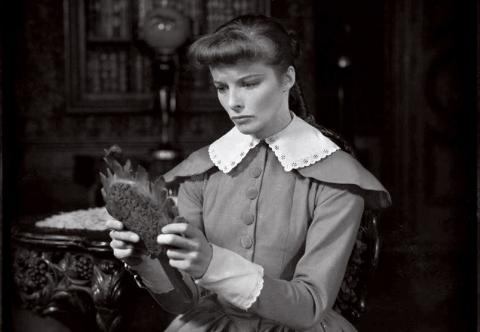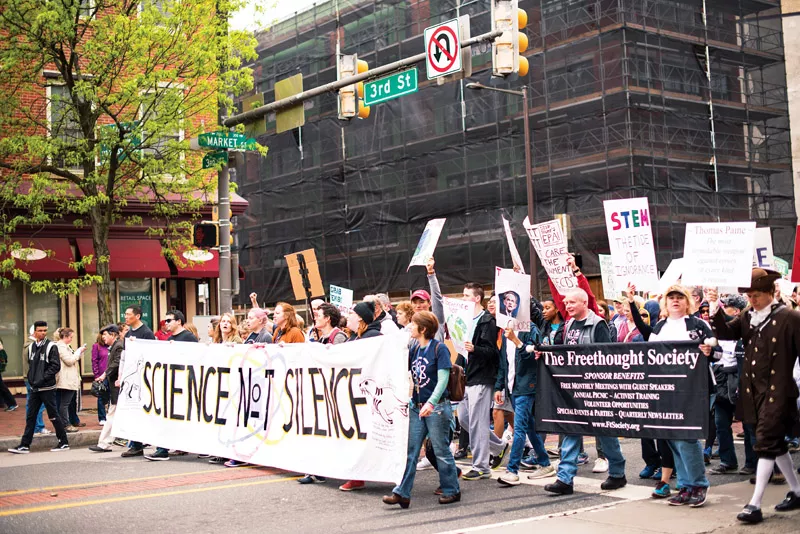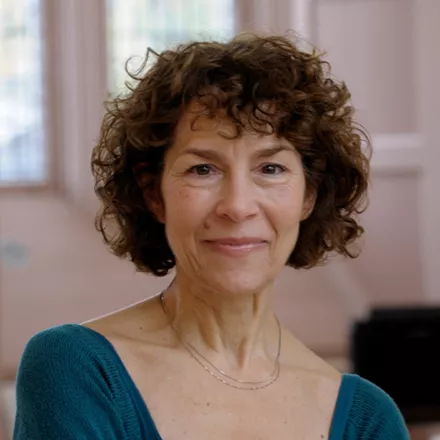For Starters: Spring 2017
Artistry. Protest. Empowerment. And a focus on the future.

1. Mirrors and Masks
Organized by 11 student curators in a 360˚ course cluster, a spring exhibition in Canaday considered the role of mirrors, masks, makeup, and masquerade in explorations of the self across the centuries and cultures. Mirrors & Masks: Reflections and Constructions of the Self draws on objects in Bryn Mawr’s Art & Artifacts Collection.
“To be able to physically handle a work you’ve read so much about is so thrilling and special,” says Alexa Chabora ’18, a history of art major considering a career in curation.
2. Dispatch from the City of Brotherly Love
“For the first 38 years of my life, if I wanted to see a dramatically desecrated Jewish cemetery, I had to fly to Eastern Europe,” said Associate Professor of Creative Writing Daniel Torday in response to the desecration of the Mount Carmel Jewish Cemetery in Philadelphia earlier this year.
On NPR’s Fresh Air, Torday recalled a 1990 visit to the Hungarian town where his grandfather was born. “On the outskirts of town we found a walled graveyard…. On headstones throughout the place we saw graffiti, the painful evidence of kids who’d come to hang out there, defacing graves and drinking. Under the weeds we found the names of my great- grandparents, who had been deported to death camps during World War II. My father explained that my great-grandparents’ bodies weren’t actually buried there. They’d never been recovered. The family had put these markers up to commemorate their lives: to consecrate them.”
“The morning I went to see Mount Carmel Cemetery, I was overcome by a familiar feeling, one I’d had in Hungary…. Now I was feeling it in the city where I live. In 2017.”
3. Tell Me What a Scientist Looks Like
At Philadelphia’s March for Science in April, Michelle Francl challenged the stereotype of scientists. Most people imagine "a man—and it’s almost always a man—in a lab coat with crazy hair, glasses, at a lab bench.”
Not so, says Francl. Scientists are also “short plump women with grey hair [and] tall athletic young women from New Jersey and brilliant women from Mexico.”
4. Against Domestic Violence
Christabel Koomson ’18 will use a Davis Projects for Peace project to achieve a personal vision: empowering girls to speak up against domestic violence.
“As a young girl growing up in Ghana, like many other young Ghanaian girls, I was always taught to revere shyness and to speak only when I’m spoken to,” Koomson says. “While these are not exactly terrible teachings, it becomes problematic when girls become women in a society that taught them from infancy that they can only speak up when asked.”
Spurred to action by the alarming rate of domestic violence suffered by Ghanaian women, Koomson has launched Project Duafe to engage girls at a high school in Kumasi. Going forward, she hopes to expand the project to the national level.
Working with about 150 girls, Koomson is offering weekly lessons on topics such as listening and storytelling, survivor sessions, intervention and resource availability, self-esteem, and the need for education. To provide ongoing support, she hopes to start a Girls Against Domestic Violence club at the school and establish an annual conference of local schools.
Davis Projects for Peace invites all undergraduates at partner colleges and universities to compete for grants. This year, 120 projects were awarded for implementation.
5. In the Spotlight
Bryn Mawr dance professor Linda Caruso Haviland was center stage at the Performance Garage’s 2017 gala this spring. The founder of the College’s dance program was honored for her contributions to the Philadelphia dance community by the city’s premier space for modern dance.
As a dancer, Caruso Haviland performed primarily with Hellmut Gottschild’s Zero Moving Company. As a scholar, she has focused on the work of Philadelphia dance artists and the rise of a professional class of dancers in turn-of-the-century Philadelphia.
6. Digital Skills for Digital Natives
Look at just about any resume these days and you’re bound to find “Mastery of Microsoft Office” in the Skills section. But ask most folks to create a pivot table in Excel, and chances are they’ll go running to Google for help.
“We think of today’s students as being so comfortable with technology, but the truth is that many of them haven’t used these tools in any sophisticated manner,” says Educational Technology Services Manager Jennifer Spohrer.
Bryn Mawr’s Digital Competencies initiative provides a framework for identifying the proficiencies students will need in the future—and can gain through their academic work, workshops and intensives, internships, and student employment.
“We don’t want people thinking of this as boxes on a checklist that need to get ticked off,” says Chief Information Officer Gina Siesing. “This is about having students take time to assess the path they want to take and to ask what the digital skills and habits of mind are that they’re going to need to get where they want to go.”
7. Dance in the Disapora
Each year, the Thomas J. Watson Fellowship program awards select seniors of unusual promise with a grant for a year of international exploration. Danielle Roomes ’17, an anthropology major and Watson Fellow, is studying African dance around the world. In the Netherlands, Roomes, who uses the pronoun they, is investigating why a South Bronx form has succeeded in a “color-blind” country. In Chile, they’ll be looking at how dance is helping millennials reclaim African history and, in New Zealand, working with a Samoan choreographer to understand how hip-hop is being incorporated with traditional indigenous styles. In Accra, Roomes will focus on communities teaching traditional drumming and dancing in a time of corporate convergence and societal change.
8. An Elite Exception
Colleges often brag about helping poorer students rise in life, but research shows that elite colleges are not much more economically diverse than in the past. But among those elites, Bryn Mawr is an exception, enrolling one of the highest percentages of low- and middle-income students. The College ranks sixth in the top 10, with 13.7 percent of its students from the bottom 40 percent of the income scale. The report, Mobility Report Cards, was released by the Equality of Opportunity Project.
Published on: 05/01/2017


